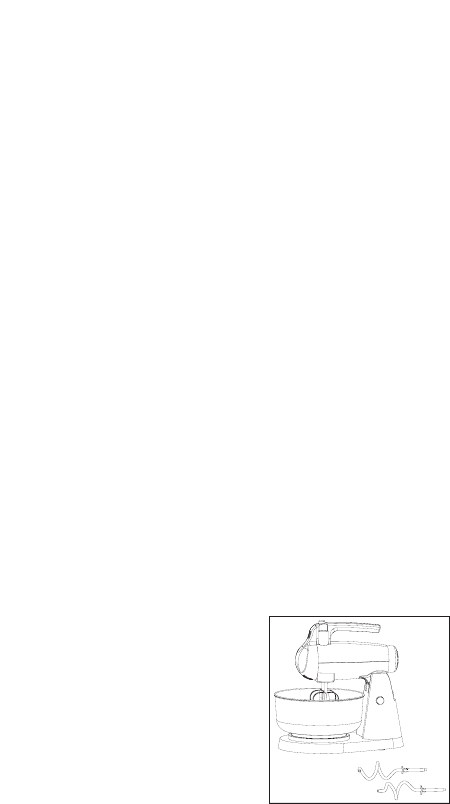
11
Using Dough Hooks
DO NOT LEAVE YOUR MIXER UNATTENDED WHILE USING THE DOUGH HOOKS.
Ingredients should be added to the mixing bowl as they are specified in the recipe.
Combine a small portion of the dry ingredients with the wet ingredients. Mix on
Speed 6. Continue adding dry ingredients until the mixture becomes sticky, then
turn to Speed 1. Gradually add remaining dry ingredients.
If there is high humidity in the air, it may be necessary to add additional flour to the
recipe. The high humidity could also extend the amount of time necessary for baking.
Guide the mixing bowl with your hands. Use caution to keep hands out of the way
of the dough hooks.
DO NOT attempt to scrape the bowl while the Mixer is operating. Stop the Mixer
and scrape the sides of the bowl as necessary. Use a rubber or plastic spatula only.
DO NOT attempt to feed dough into the dough hooks with your hands, a spatula
or any other utensil while the Mixer is plugged into an outlet or in operation.
If times are specified in the recipe, use them.
BE CAREFUL NOT TO OVER MIX.
Over mixing can cause the mixture to become tough. We suggest the maximum
mixing time should be 6-8 minutes.
Should an object, such as a spatula, fall into the bowl while the mixer is operation,
turn the mixer OFF immediately. Then remove the object. Remove dough hooks
and place in sink for easy clean up.
DOUGH RISING TIPS
A large, well-greased, glass mixing bowl is an excellent container in which to raise
yeast dough. The ideal temperature is 85°F/30°C in an area that is draft free. Cover
with a light cloth. The final rising should be after the dough has been shaped and
placed on a greased baking sheet or pan recommended in the recipe. Again, cover
the rising dough and place in a warm, draft-free area. If you live in a high altitude
area, yeast breads will require a shorter rising time. Allow the dough to rise only
until it has doubled in size. Slightly less flour should be used because flour is dryer
at higher altitudes.














